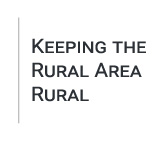Aug. 15, 2018
Hearing Examiner Alison Moss,
Mitigation! Mitigation! Mitigation!
SCAR finds the proposed development of this piece of the Pacific Raceways property to be severely impacting to the neighborhood without any mitigation of consequence. We get more noise, pollution, reduced property values and traffic,and PacRac gets revenue from mining gravel for 3-5 years, rental from garages, and increased revenue forever from leasees/renters. This newest episode is similar to the CUP modification that allowed the closing times for Wed., Fri. and Sat nights to be extended (forever) for which PacRac was required to provide a quarter mile exit lane along Hwy. 18, which was a safety problem their activities caused, and which disappeared when 18 was widened a few years later. Mitigation, really??
The CUP required a Noise Control Methods plan to be approved by BALD and the Hearing Examiner but no action was ever carried out by the raceway nor by the county. This plan should be resurrected or if not found, developed [with help from the community], approved and implemented. Mitigation was the primary focus of this plan but the public was short changed again.
Noise mitigation is obviously lacking in this MDNS application. A noise monitoring system is not real mitigation but a tool for enforcement of existing rules and county code. The CUP required “quiet days/hours” to compensate for the additional noise generated by the track. Over the years noise levels have increased in hours and volume, and this IUP will further exasperate the impacts to neighbors. This method of mitigation appears to be the only remedy for the surrounding community, who are most impacted by noise from activities at the raceway, be it racing, training, mining or construction.
Consideration should be given to the obvious conclusion that a permit for clearing and grading involves short term soil disturbance (dust and noise) and usually completed in a month or so. However a permit for mining would assume continuous soil disturbance with the neighboring properties/people impacted for several years, as in this case. This is the main reason that a mining permit requires an EIS. It is also obvious that these garages will have impacting noise, chemical smells and traffic indefinitely that are in addition to what the neighbors have to contend with now. It can be assumed that if/when the complete demonstration project EIS is done this piece-mealing project will be determined mute because it was already permitted and built. If this IUP project is to receive a proper study of environmental and neighborhood impacts the study should be conducted in a timely manner.
This project is being sold just like the drag strip move permit of about ten years ago. This is because that permit was supposedly part of their planned site expansion, was predicated on being allowed to mine gravel to pay for the EIS, and included multiple mitigation measures. What in fact happened was PacRac mined the gravel, then let the permit expire while not implementing the mitigation that the permit was conditioned on. This permit action is unfolding in almost exactly the same way, allowing massive gravel mining with no EIS, based on a plan to implement some proposed phase of a larger development plan. Our understanding is that the argument is even the same, i.e. that Mr. Fiorito needs to be able to mine the gravel either to pay for the EIS, or to pay down his debt to be able to get financing to build the garages (depending on when you talk to them). So this proposed action has most of the same trappings as what the arguments were to the agency to grant the drag strip permit. Are we about to be made fools of again?
Thank you for consideration of our view of this proposed project.
SCAR Board
